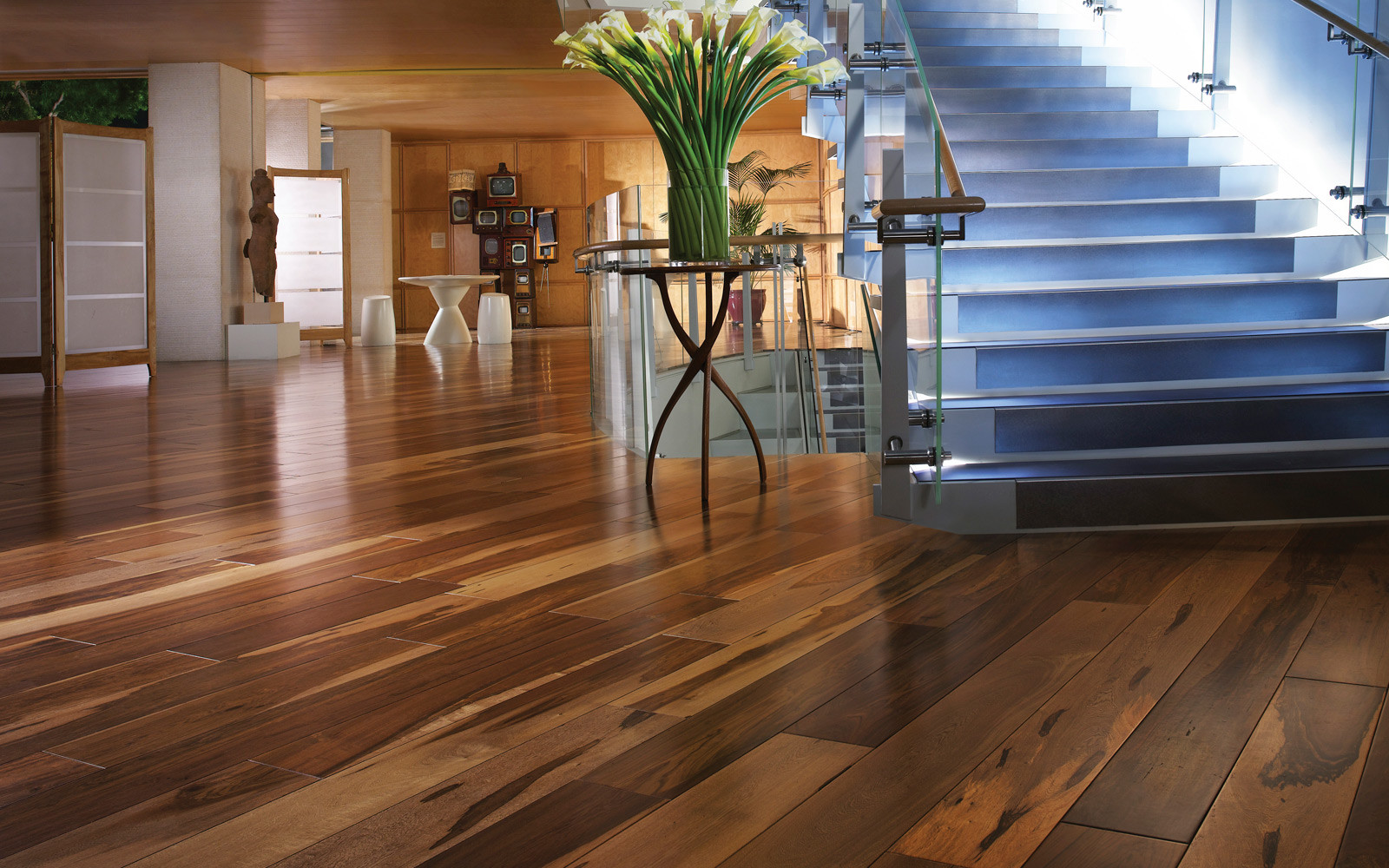Hardwood
Installing hardwood flooring is one of the best ways to add warmth, durability, and value to your home.
Tools and Materials You'll Need
Tools Required
- Tape measure
- Chalk line
- Pencil
- Carpenter’s square
- Pry bar
- Level
- Tapping block
- Rubber mallet
- Flooring nailer or stapler (for nail-down installation)
- Finish nail gun (for final rows and trim)
- Power drill
- Circular saw, miter saw, or table saw (for cutting planks)
- Jigsaw or oscillating multi-tool (for cutting around vents or obstacles)
- Utility knife
- Vacuum or broom
- Safety gear: gloves, knee pads, safety glasses
- Moisture meter
Materials Required
- Hardwood flooring planks
- Underlayment (if required)
- Vapor barrier or moisture barrier (for concrete subfloors)
- Flooring adhesive (for glue-down installation)
- Flooring nails or staples (for nail-down installation)
- Wood putty (to fill small gaps or nail holes)
- Transition strips (if needed)
- Baseboards or quarter-round molding

DIY Guide: How to Install Hardwood Flooring – Step-by-Step
Installing hardwood flooring is one of the best ways to add warmth, durability, and value to your home. While it requires patience and precision, this guide will walk you through every single step to ensure a flawless installation.
There are three main ways to install hardwood flooring. The method you choose will depend on
the type of hardwood you’re using and the condition of your subfloor
Nail-Down Installation – Requires a flooring nailer or stapler. Best for plywood or OSB
subfloors.
Glue-Down Installation – Requires a flooring adhesive. Ideal for concrete subfloors or
engineered hardwood.
Floating Installation – Some engineered hardwood planks lock together without nails or
glue. This is the easiest method for DIYers.
Wood naturally expands and contracts with temperature and humidity changes. To prevent
warping after installation, you must acclimate the planks.
Store the flooring inside the room where it will be installed for at least 72 hours.
Stack the boxes flat and allow air to circulate around them.
Maintain a consistent room temperature between 60-80°F and relative humidity between
30-50%.
Tip: Use a moisture meter to compare the moisture levels of both the subfloor and
hardwood planks. The difference should be within 2% before installation.
A clean, dry, and level subfloor is critical for a successful hardwood installation.
Remove any existing flooring and clean the subfloor thoroughly.
If installing over concrete, apply a moisture barrier to prevent warping.
If the subfloor is uneven, use a floor-leveling compound to smooth out low spots and
sand down high areas.
Check for squeaky subfloors. Secure loose areas with screws.
Tip: Run a straightedge across the floor to check for dips or humps. The subfloor
should be within ⅛ inch over 6 feet of level.
Proper planning ensures a balanced look and prevents small, awkward cuts at the edges of the
room.
Choose the longest, straightest wall to start. This is usually the exterior wall since it’s
more likely to be square.
Measure the room and divide the width of the planks into the total width of the room. If
the last row would be less than half the width of a plank, cut the first row slightly
narrower to balance the layout.
Snap a chalk line along your starting point to keep planks aligned.
Stagger the joints so that seams don’t line up. The minimum stagger should be 6 inches
to create a natural look.
Tip: If your walls are not perfectly square, make slight adjustments with the first row
instead of forcing all the planks into alignment later.
For Nail-Down Installation:
1. Lay down underlayment if required.
2. Place the first row along the chalk line, with the tongue facing the center of the room.
3. Use a flooring nailer or stapler to secure each plank every 6 to 8 inches, staying
about 1 to 2 inches from the edge.
4. Work row by row, ensuring each plank is snug against the previous one. Use a
tapping block and rubber mallet to tighten seams.
For Glue-Down Installation:
1. Spread flooring adhesive using a trowel over a small section of the subfloor.
2. Lay the first row into the adhesive and press firmly.
3. Continue working in sections, making sure to wipe away excess glue before it dries.
4. Use a floor roller to ensure strong adhesion.
For Floating Installation:
1. Lay a foam underlayment (if required) over the subfloor.
2. Click the tongue-and-groove planks together by angling each plank into the previous
row and snapping them down.
3. Continue installing row by row, staggering seams for a natural look.
Tip: For a more secure floating floor, apply wood glue to the tongue before
snapping planks together.
For door frames, use an oscillating tool to trim the door casing so the planks can slide
underneath.
For vents and irregular shapes, use a jigsaw or multi-tool for precision cuts.
If needed, a heat gun can help soften engineered planks for intricate cuts.
Measure the remaining gap and cut planks lengthwise using a circular saw or table
saw.
Use a pull bar to fit the final planks snugly.
Secure the last row using a finish nail gun if necessary.
Remove spacers and install baseboards or quarter-round molding to cover
expansion gaps.
Install transition strips if your hardwood meets another type of flooring.
Fill nail holes or small gaps with wood putty that matches your flooring.
Clean the floor thoroughly and avoid placing heavy furniture for 24-48 hours to allow
settling.
Tip: Avoid excessive moisture when cleaning. Use a dry mop or damp microfiber
cloth instead of a wet mop.
Common Challenges & How to Solve Them
Gaps between planks – Make sure planks are properly locked and pressed tightly
together before securing them.
Uneven subfloor – Use leveling compound to fix dips or high spots before installation.
Creaking sounds – Secure the subfloor with additional screws before installing
hardwood.
Difficult cuts – Use a jigsaw for precision and a heat gun for softer engineered wood
planks.
Buckling or cupping – Ensure you have left proper expansion gaps around the edges and maintain consistent indoor humidity.
Final Thoughts
Installing hardwood flooring is a rewarding project that can completely transform your space. If you take your time with proper prep, accurate measurements, and careful cutting, you’ll achieve a professional-quality result that lasts for years.

